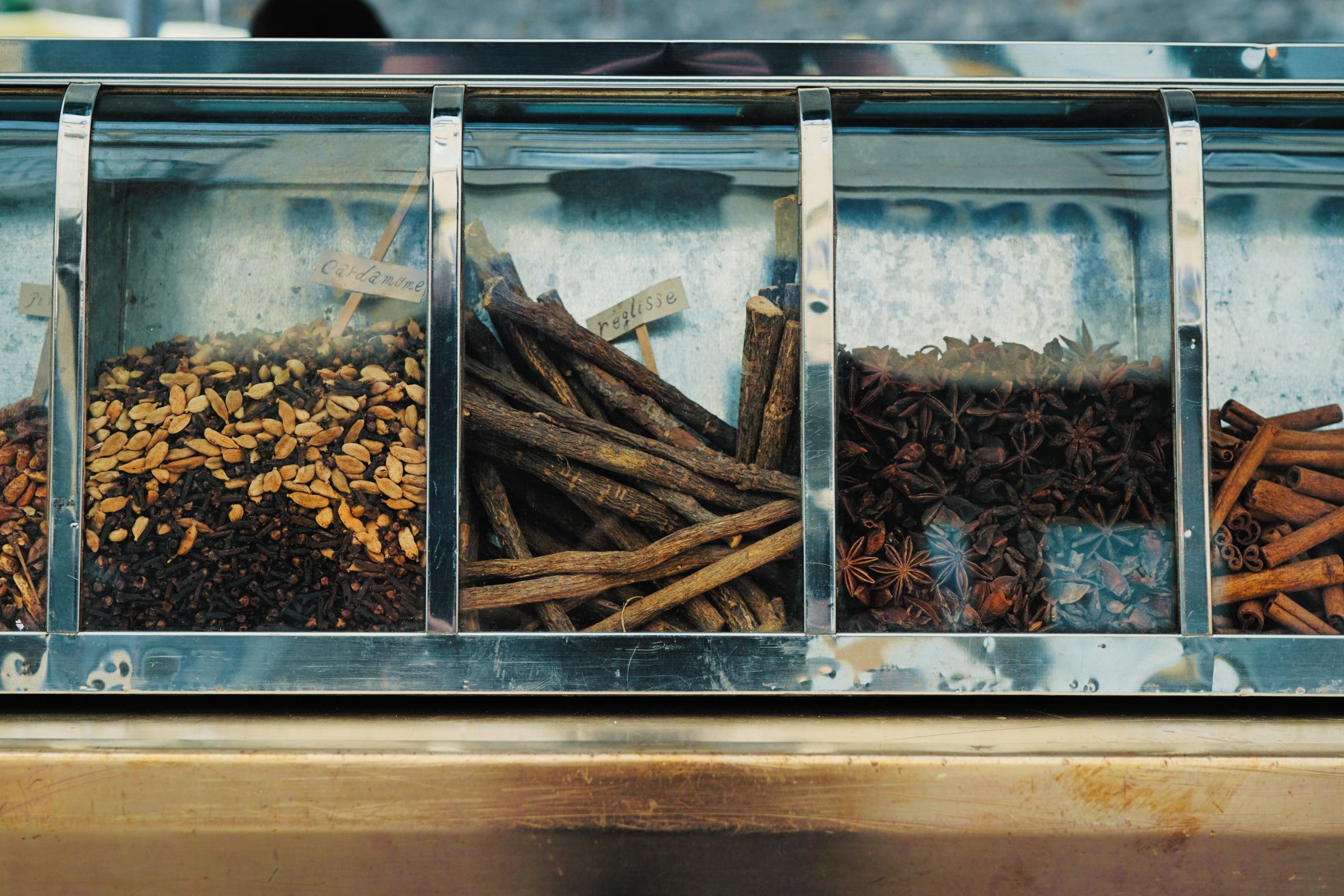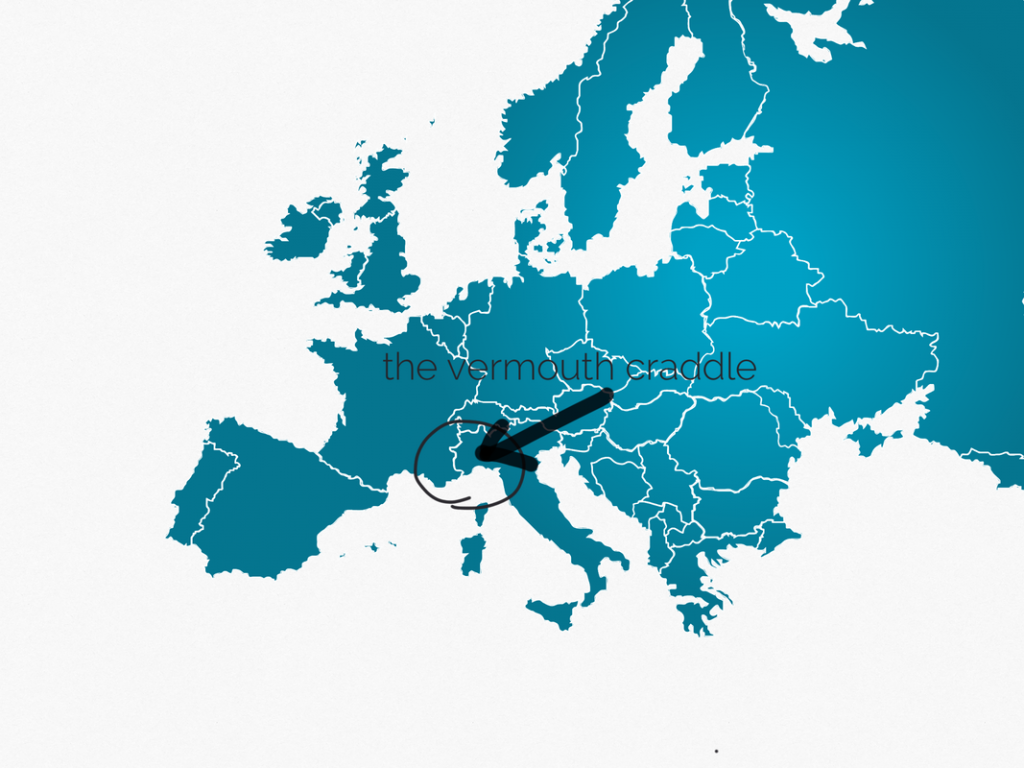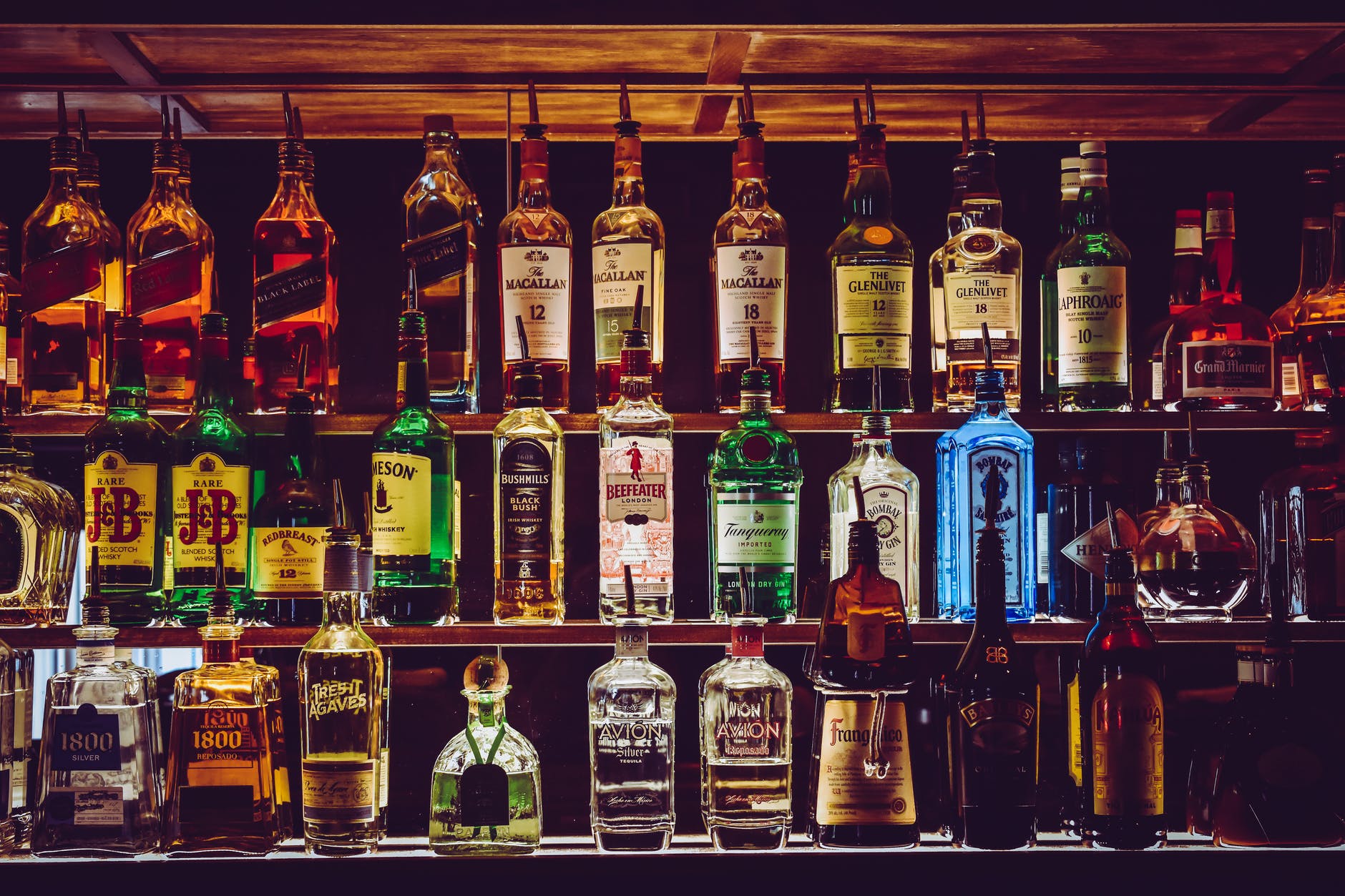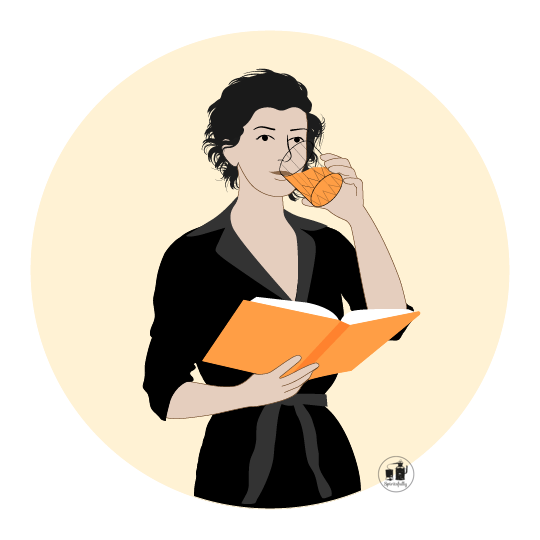
All you need
to know about
vermouth
in a nutshell
Vermouth is not a spirit. Made from fortified wine, it is then flavoured by adding aromatic plants. On the aromatic level, a flavour brought by wormwood, which is in fact absinthe, petite and grand wormwood, must dominate. Its sugar content can vary, as well as its colour, which can be enhanced by the addition of caramel. Generally, vermouth has an abv. between 14.5 and 22%.
The regulations of vermouth
Some European vermouths have a registered designation of origin (Vermouth di Torino and Vermouth de Chambery). Thus, Chambéry vermouth can only be produced in Savoy and Turin vermouth only in Piedmont.
The geography of vermouth
Everywhere! Vermouth can be done everywhere. However the first Vermouth as we know them have been developed in a small territory between the Alps and the Mediterranean. Look at the map below.

The history of vermouth
The word vermouth is derived from the German word for wormwood, “wermut.” Wormwood has long been the chief flavouring ingredient for vermouth, though it’s better known as being the main ingredient of absinthe. Hippocrate already advised to mix artemisia absinthium with oregano in a low abc wine to help smoothen coughing. Like bitters and liqueurs, vermouth has its origin into medicinal purpose but became mostly recreational in the 19th century, when brands appeared.
Vermouth is historically produced in Italy, in the region of Turin, in Piedmont. In France, there are several production regions, such as Chambéry, and the whole region from Marseille to Béziers was the traditional vermouth production region.
The cities of Chambéry and Turin disputed the origin of Vermouth for a long time (they were both part of Duché de Savoie before the 19th century hence the dispute started when the Duché was spit in two, one side in France, the other in Italy).
However, what is sure is that the use of the word “Vermouth” to refer a fortified drink was first noted in 1786 by Antonio Benedetto in Turin, inspired from a German aperitif recipe composed of wine and Wermut (the plant).
The development of Vermouth as a back and forth between France and Italy
Several Italian families started to distribute their own vermouth, including the Cinzano family. Once her company had settled in Turin, it quickly developed a network of sales agents to sell its vermouths as far away as France, where this aperitif was often copied. In 1813, for example, the French absinthe and liqueur producer Joseph Noilly introduced his recipe for Dry Vermouth, made from white wines from the Languedoc. Taking over in 1829, his son Louis began to export absinthe, liqueurs and vermouth production beyond France. In 1843, his brother-in-law, last name Prat became his partner and the company was renamed Noilly-Prat. In 1844, the first order was shipped to the United States (New Orleans and New York). In parallel, Joseph Chavasse developed his own vermouth in Chambéry in 1821. Made from local aromatic plants, this vermouth named Dolin was the first to obtain the AOC a century later (1932). The Dolin brand was also at the origin of the marketing of the first White Vermouth.
How is Vermouth made?
Again, vermouth is definitely an alcoholic beverages but not a spirit stricto sensu, this is why all the usual steps you find for other spirits (conversion, fermentation, distillation, maturing, etc) are not valid here. It does not mean some vermouth are not undergoing some of those steps…..
The ingredients aka the base material of Vermouth
Wine
The wine is often white wine, rather neutral, low abv. and rather acidic. The quality of the vermouth depends on the selection of the wine.
Botanicals
There are nearly a hundred herbs for vermouth, a recipe that can include up to 30. The most common are: coriander, bitter orange, angelica, cloves, cinnamon, absinthe, gentian, elderflower, cardamom, anise, vanilla, cinnamon bark, iris, marjoram, chamomile and sage.
Neutral alcohol
It can be fortified alcohol, neutral or like mistelle = fresh grape juice mixed with alcohol. This is what makes Vermouth a fortified alcohol.
Sugar (not always)
Caramel is used to give the colour red.
The extraction techniques
The choice and proportion of herbs play a major role in the final character of vermouth. The methods of extracting the flavours (by maceration, infusion or distillation) are the same that for many other alcol (look at the Liqueur section to understand the process in details or also the Gin section). The flavours are then mixed with the wine. After sugar, fortified alcohol and sometimes caramel, are added.
The sugar content of the resulting blend can be adjusted by adding cane sugar (white vermouth) and caramel (red vermouth). The whole is then carefully brewed, for a better integration of the different elements composing the vermouth.
Maturation and ageing of Vermouth
Once the many ingredients are blended, the resulting liquid is placed in oak barrels: the vermouth is left to rest for 5 to 6 months in barrels with the plug left open, in order to promote interaction with oxygen.
The styles of Vermouth
The two main categories of vermouth are often classified as such:
-“sweet” refers to Italian vermouths
-“dry” refers to French vermouths
Beyond geographical considerations, the classification of vermouths is also based on their sugar content:
-Extra Dry / Dry / Secco
-White or straw vermouth, measuring from 18 to 20%, with a sugar content not exceeding 40 g/liter.
-White / Bianco
-Gold-coloured vermouth, measuring about 16%, with a sugar content ranging from 100 to 150 g/liter.
-Sweet / Rosso
-Amber-coloured vermouth (by adding caramel), ranging from 15 to 17%, with a sugar content of 150 g/liter or more.
Beyond sugar content, it is also the organoleptic profile that define them.
You’ll find two other styles below (Americano and Quinquina)
QUINQUINA*
One group of these wines is known as quinquina, because historically these wines feature (or at least include) Peruvian cinchona bark amongst their botanicals. Cinchola is the botanical name for cinchona, a small tree native to the slopes of the northern Andes, which is available in red cinchona (Cinchona pubescens), yellow cinchona (Cinchola calisaya) and grey cinchona (Cinchona officinalis).
As quinquina gris (Cinchona officinalis) is lower in quinine than the others, it has been used in the preparation of various bitter drinks and aromatic aperitif wines.
AMERICANO*
Americano refers to the word amer (bitter). The americano can be considered as a subclass of quinquina or as a separate category: the real americano uses the gentian root as a gustative agent. Where quinquina’s defining flavor is quinine, Americano’s is both gentian and wormwood.
Historian François Monti hypothesizes that Americano—which seems to have emerged in the 1890s—may be a commercial elaboration on “vermouth con bitter” (vermouth with added gentian), a Turinese cafe tradition documented by Arnaldo Strucchi.
The current trends in vermouth making?*
So far, we’ve been talking about traditional vermouth: European products with Alpine roots (and their imitators). Various new contemporary non-traditional styles also can be found in some markets.
What some call “Western Dry”—a de-facto style begun in California in the late 1990s—is already fairly well established. These are small production aperitif wines labeled as vermouth but which, in most cases, are otherwise unrecognizable as such. These products tend to be “wine-forward” and feature drastically divergent botanical components.
The resurgent market is also producing other novel, non-traditional ideas. Some represent contemporary innovation from traditional vermouth producers. Others, such as the new vermouths out of Jerez based on sherry, are crossover forays comparable to the “Western Dry” phenomenon. Most of these are just beginning to test the market in the 2010s.*

RESOURCES/SOURCES
The last paragraph about current trend comes from the best website about Vermouth (same for the paragraph about Americano and Quinquina)
http://vermouth101.com/
Been very much helped by the two French speaking Alcools by Andre Hominé and Bières, Vins et Spiritueux à travers le monde by Stuart Walton and Brian Glover (the original book is in English though)
Checking wikipedia from time to time is very helpful.
And, last but not least, Lisa Bauer has been an inspiring figure. She made me understand Vermouth. You should tried her Uhudler Vermuth.

